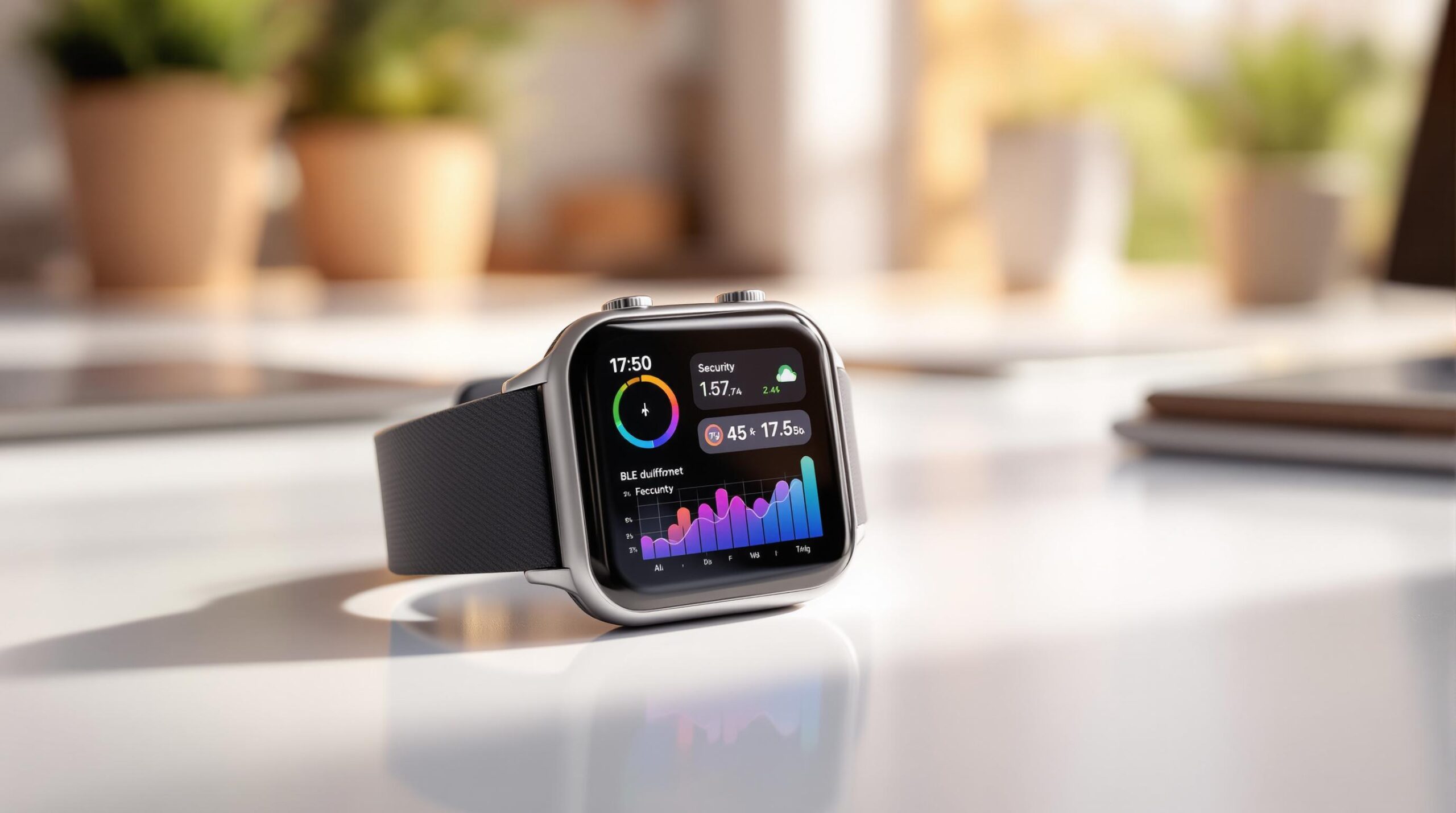
Native apps are the best choice for BLE-enabled wearables when performance, security, and battery efficiency matter most. They provide faster processing, better hardware integration, and stronger security compared to hybrid apps. Here’s why:
- Performance: Native apps are 15-20% faster and load 60% quicker on wearables.
- Battery Efficiency: Use up to 3x less power, extending device usage.
- Security: Leverage platform-specific encryption and biometric authentication.
- Hardware Integration: Offer direct access to BLE sensors for real-time data and advanced capabilities.
- Best Use Cases: Ideal for healthcare, fitness, and IoT where reliability and precision are critical.
Quick Comparison:
| Aspect | Native Apps | Hybrid Apps |
|---|---|---|
| Performance | Faster, direct hardware access | Slower, plugin-dependent |
| Battery Usage | More efficient | Higher consumption |
| Security | Built-in platform protections | Relies on additional measures |
| Development Time | Platform-specific | 30-40% faster |
| Offline Capabilities | Better performance | Limited by web technologies |
Native apps are more expensive upfront but pay off in the long run with better performance, security, and compatibility with evolving BLE standards. For critical applications like medical devices, they are the clear winner.
Related video from YouTube
1. Native Apps: Core Features
Native apps designed for BLE-enabled wearables bring several standout benefits, making them ideal for high-performance and feature-rich applications. Their ability to directly access hardware and use platform-specific APIs ensures better performance and functionality.
Performance Optimization
Native apps excel in processing speed and resource management, offering 15-20% faster execution compared to hybrid apps [1]. They also load up to 60% faster on wearable devices [5], which is essential for handling real-time data from BLE sensors and keeping user interfaces responsive.
Battery Efficiency
With direct access to hardware, native apps use power more efficiently, consuming up to three times less energy than hybrid solutions [4]. This is especially important for wearables with limited battery life, allowing for longer usage between charges.
Enhanced Security
Native apps leverage platform-specific security measures, including hardware-based encryption for BLE communication, biometric authentication, and detailed permission controls. These features ensure better data protection.
Seamless Hardware Integration
Native development enables direct interaction with BLE-connected sensors like accelerometers and heart rate monitors. This allows for advanced capabilities, such as real-time data streaming and sensor fusion, which combines multiple data points for more precise insights.
Advanced Capabilities
Native apps support features like on-device AI processing, edge computing to reduce latency, and background data synchronization tailored with custom algorithms. These capabilities set them apart in terms of functionality and efficiency.
Practical Applications
Native apps are particularly suited for wearables used in healthcare, fitness tracking, and industrial IoT. Their robust security, efficient performance, and advanced hardware integration ensure compliance with industry standards while delivering reliable results.
While native apps offer significant advantages for BLE wearables, hybrid solutions provide a different set of benefits, which we’ll explore in the next section.
sbb-itb-7af2948
2. Hybrid Apps: Core Features
Hybrid apps combine web technologies with native containers, allowing them to work across platforms while supporting BLE functionality.
Development Efficiency
With a single codebase for multiple platforms, hybrid apps streamline development. This approach is especially useful for creating prototypes or MVPs.
Performance Considerations
Despite advancements in frameworks, hybrid apps often experience a 5-10% performance drop compared to native apps[4]. This difference is mainly because native apps have direct hardware access, which is crucial for time-sensitive BLE tasks.
Hardware Integration
Hybrid frameworks use plugins and APIs to handle essential BLE features like device scanning, data transfer, background operations, and offline caching[1].
Security Implementation
Security in hybrid apps relies on additional measures like encryption, authentication, and compliance checks, unlike native apps that benefit from built-in platform protections.
Battery Optimization Strategies
To manage power consumption, developers use efficient protocols, limit background processes, and apply platform-specific power management techniques[1].
Development Framework Options
Popular frameworks include Apache Cordova and Ionic for web-focused projects, while React Native and Flutter are preferred for performance-oriented builds[5].
Hybrid apps are a practical choice for basic BLE tasks, but their performance limitations make native development the go-to option for latency-critical wearable applications.
Direct Comparison: Native vs Hybrid
When it comes to BLE wearables, native apps consistently lead the way in three key areas:
Performance and Battery Usage
Native apps use up to three times less power during BLE operations and deliver 15-20% faster data processing. This efficiency is crucial for wearables, where both battery life and responsiveness are top priorities [1] [3].
Hardware Integration and API Access
With native development, you gain precise control over BLE functions, which is critical for real-time sensor data processing. For example, Fitbit’s seamless continuous heart rate monitoring relies on this level of control – something hybrid solutions often struggle to match.
Long-term Maintenance
While hybrid apps may speed up initial development, native apps tend to be more cost-efficient over time, especially as BLE standards evolve and require updates.
| Aspect | Native Apps | Hybrid Apps |
|---|---|---|
| BLE Integration | Direct hardware access | Plugin-dependent access |
| Development Time | Platform-specific development | 30-40% faster development [2] |
| Offline Capabilities | 20% better offline performance [7] | Limited by web technologies |
| Platform Features | Access to 30% more native features [9] | Limited by cross-platform framework |
Native apps are particularly well-suited for healthcare and IoT applications. These scenarios demand reliable BLE communication, precise hardware control, and strong security measures to handle sensitive data effectively.
Conclusion
Our comparison highlights that native apps are the top choice for BLE-enabled wearables, especially in scenarios demanding high performance and strict security.
For medical devices, native apps ensure compliance with hardware-level encryption, deliver real-time processing, and extend battery life through optimized BLE protocols. These advantages make them essential for healthcare, fitness tracking, and IoT applications, where reliability cannot be compromised.
The wearable tech market is expected to grow at a 19.1% CAGR from 2021 to 2028 [6], emphasizing the need for development strategies that keep pace with advancing BLE standards. While native development involves higher upfront costs, its unmatched performance and security benefits make it the go-to solution for critical applications.
With BLE standards and edge computing continuing to evolve, the performance gap between native and hybrid solutions is likely to grow even further [3][8]. Companies seeking specialized solutions can gain an edge by partnering with experts like Sidekick Interactive, known for building secure, high-performance native apps tailored to healthcare and IoT needs.
For developers focused on medical-grade reliability, native development offers the best path to achieving stringent security requirements while maintaining top-tier performance.

